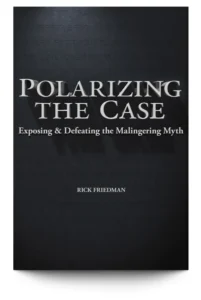In one iteration of his “Ten Commandments” lecture on cross-examination, the famed advocacy teacher Irving Younger posited that ‘less is more.’ When showing a witness’ bias, you need not call them out as a liar; instead, simply argue in closing “and the witness, who testified for the defendant – it’s their mother.” According to Younger, it will be the jurors who go in the back and say “mom was a $@*^* liar.”
A variation on this lesson is to never take the extreme position. Why argue that ‘the only way’ something could have happened is X, or that the person whose conduct was at issue was reckless when negligence is all that need be proved? Once the ‘goal line’ is moved to your disadvantage, any proof one inch short becomes a verdict for your opponent.
But this principle may need to be flipped on occasion. I learned this first some 35 years ago when co-teaching an advocacy course with a great trial attorney, Hastings Griffin. When it came time to demonstrate a closing argument in a mock civil case file where the accusation was that a nurse/caretaker had somehow gotten control of an infirm person’s assets, Griffin said something along the lines of the following in defense of the nurse:
Members of the jury, for the plaintiff to prevail you must be convinced that [name of nurse] is a criminal, a person who spent years caring for others but has now become a thief. She isn’t.
That was his closing in its entirety. When he sat down I was slack-jawed. How could a closing not regurgitate the facts, discuss the law and the burden of proof, and anticipate and debunk the opposing party? Had we failed our students?
Certainly, we had not given them the elements of a standard closing. But Griffin saw through the case, that it came down to whether the nurse committed an act that was not just tortious but also broke the law. In effect, he polarized the matter.
At least that is the term I now find appropriate for his nothing-short-of-brilliant 30 second argument. And credit for that term goes to legendary plaintiff’s lawyer and author/lecturer Rick Friedman, known to many for his RULES OF THE ROAD book and approach. Less well known, but of great importance, is his 2007 POLARIZING THE CASE (Trial Guides 2007).

POLARIZING was written as a guide to challenge claims of injured plaintiff malingering. Friedman explains that when such an extreme stand is taken by your opponent it is not worth trying to see where your expert and the defense expert(s) agree. As Friedman writes, if on a spectrum of 1 to 10 your position is 3 and your opponent’s is 8, don’t try and move their expert to 4, 5 or 6. Instead, polarize the case, i.e., make their expert(s) take the most extreme stance possible:
- So, all of the neighbors who described my client’s pain and limitations are wrong
- Or were fooled
- And my client gave up what he loves – skiing – for the three years since the accident just to convince of their pain
As he goes on to explain,
Using the polarizing choice, you do not undercut your own client. You are giving the jury two choices…Plaintiff’s version is still: “I was injured, and I am still injured.” Defendant’s version is pulled out into the light for all to see: “Plaintiff isn’t injured; she is a liar, a cheat and a fake.” Rejecting plaintiff’s version means accepting defendant’s version…
If you disprove the defendant’s version, you are likely to win.
POLARIZING, 40.
Friedman’s ultimate stance is that polarizing is liberating as you speak the truth to the jury, an act that is likely to be welcomed by the jury. And it is not limited to malingering claims. Don’t take your case to an extreme, leaving the jury few options to rule in your favor – but when the opponent is extreme, polarize the case.
